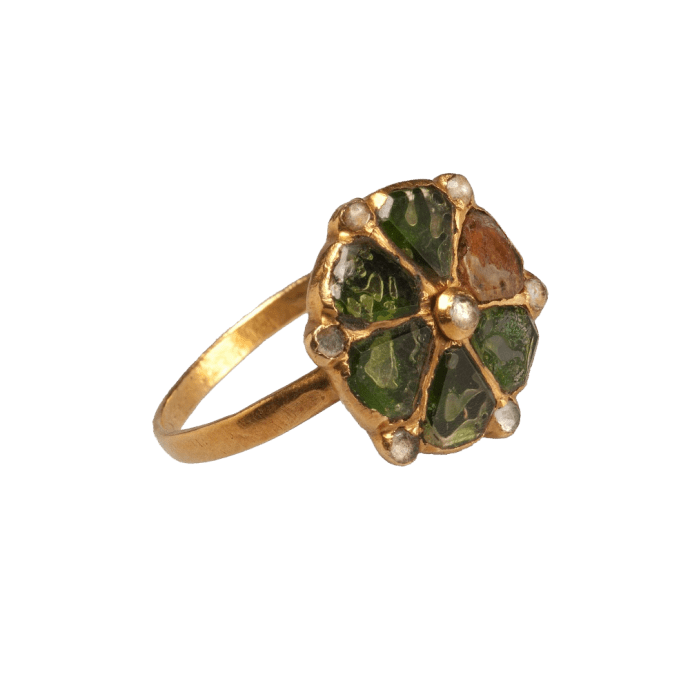


Italian Glass Decorative Ring
, 17th century



Italian Glass Decorative Ring
Description
Foiled glass in a rosette-style setting, this charming Baroque ring echoes the natural beauty of a flower.
The attention paid to gems over the goldsmith's settings prevailed in the first half of the seventeenth-century. Examples of this new fashion in jewelry are evident in items from the Cheapside Hoard and in design books from across Baroque Europe. Often, as with the present ring, the gems were highlighted by their rosette style settings.
Gold sexfoil bezel set with six diamond-shaped and table cut glass stones over foil. Each petal is interspersed with a round rock crystal bead, with a seventh in the center. The back of the bezel is sculpted to emphasize the floral shape of the ring. A fine D-ring hoop terminates in fluted shoulder molded to the underside of the second and fourth petals. The foils have oxidized to green on each petal with the exception of the fourth petal where the foil now appears a rust color. The ring is in very good condition.
Literature:
An almost identical setting for a hat ornament was found in the Cheapside Hoard (Museum of London A14082; see Princely Magnificence, Victoria and Albert Museum 1981, p. 25 and Forsyth, London, 2013). These rosette designs may have been inspired by Merovingian jewelry (see for example a fibula conserved in Saint-Omer; Le Nord de la France de Theodose à Charles Martel, 1984, p. 59). The faux-cloisonné structure and use of foil under glass certainly point to a Merovingian model. An enameled English ring similar in design is housed in the Victoria and Albert Museum (see Oman 1993, number 319a, p. 72). Rings with similar attention to the under-bezel are published in a variety of sources. See for instance, no. 184 in Scarisbrick 2004.